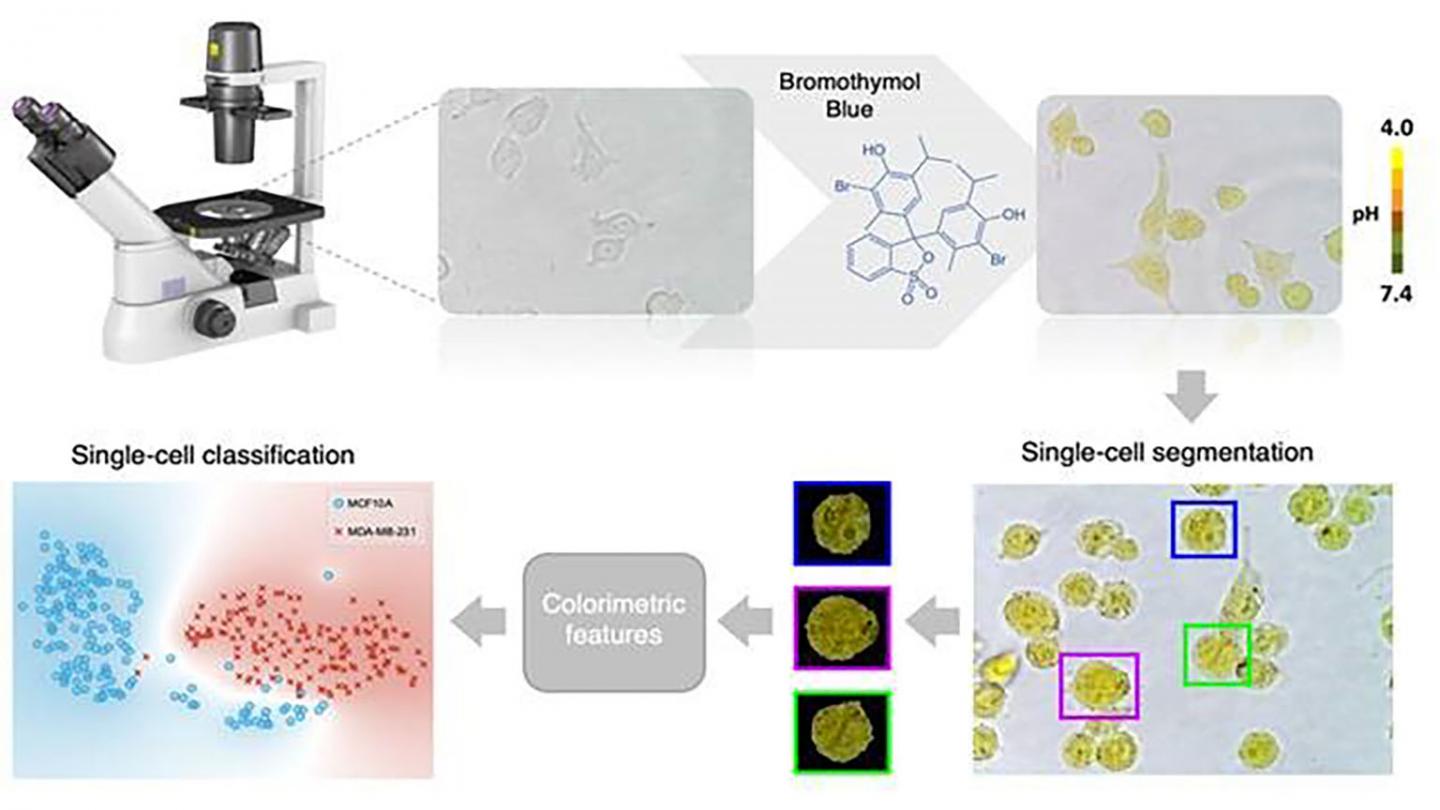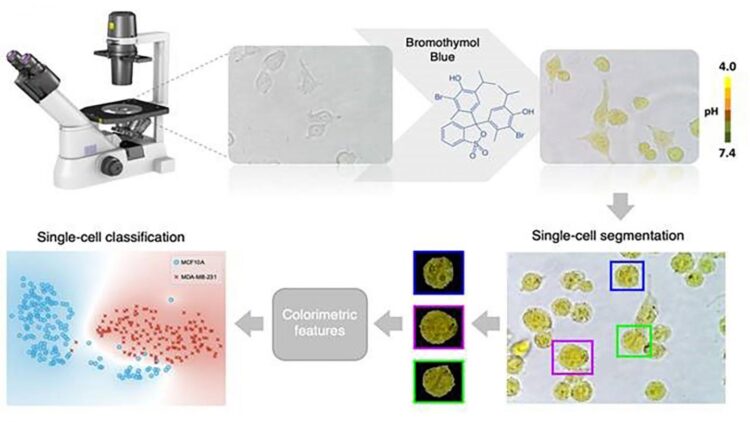Using a special dye, cells are colored according to their pH, and a machine learning algorithm can detect changes in the color spectrum due to cancer

Credit: Yuri Belotti
WASHINGTON, March 16, 2021 — Cancerous cells exhibit several key differences from healthy cells that help identify them as dangerous. For instance, the pH — the level of acidity — within a cancerous cell is not the same as the pH within a healthy cell.
Researchers from the National University of Singapore developed a method of using machine learning to determine whether a single cell is cancerous by detecting its pH. They describe their work in the journal APL Bioengineering, from AIP Publishing.
“The ability to identify single cells has acquired a paramount importance in the field of precision and personalized medicine,” said Chwee Teck Lim, one of the authors. “This is because it is the only way to account for the inherent heterogeneity associated with any biological specimen.”
Lim explained that other techniques for examining a single cell can induce toxic effects or even kill the cell. Their approach, however, can discriminate cells originating from normal tissues from cells originating from cancerous tissues, as well as among different types of cancer, while keeping the cells alive.
The method relies on treating the cells with bromothymol blue, a pH-sensitive dye that changes color depending on how acidic a solution is. Each type of cell exhibits its own unique fingerprint of red, green, and blue (RGB) based on its intracellular acidity. Because cancerous transformation alters the cell’s pH, an unhealthy cell will respond to bromothymol blue differently, resulting in a characteristic shift of its RGB fingerprint.
By training a machine learning algorithm to map combinations of colors to the disease state of individual cells, the authors can easily recognize an undesired shift. This allows them to determine the health of a cell using only simple, standard equipment: an inverted microscope and a color camera.
“Our method allowed us to classify single cells of various human tissues, both normal and cancerous, by focusing solely on the inherent acidity levels that each cell type tends to exhibit, and using simple and inexpensive equipment,” Lim said.
For practical implementations of this approach, medical professionals will need to noninvasively acquire a sample of the cells in question.
“One potential application of this technique would be in liquid biopsy, where tumor cells that escaped from the primary tumor can be isolated in a minimally invasive fashion from bodily fluids,” Lim said.
The group is looking forward to advancing the concept further to try to detect different stages of malignancies from the cells. They envision a real-time version of the procedure, in which cells suspended in a solution can be automatically recognized and handled.
###
The article “Machine learning based approach to pH imaging and classification of single cancer cells” is authored by Y. Belotti, D.S. Jokhun, J.S. Ponnambalam, V.L M. Valerio, and C.T. Lim. The article will appear in APL Bioengineering on March 16, 2021 (DOI: 10.1063/5.0031615). After that date, it can be accessed at https:/
ABOUT THE JOURNAL
APL Bioengineering is an open access journal publishing significant discoveries specific to the understanding and advancement of physics and engineering of biological systems. See http://aip.
Media Contact
Larry Frum
[email protected]
Related Journal Article
http://dx.





